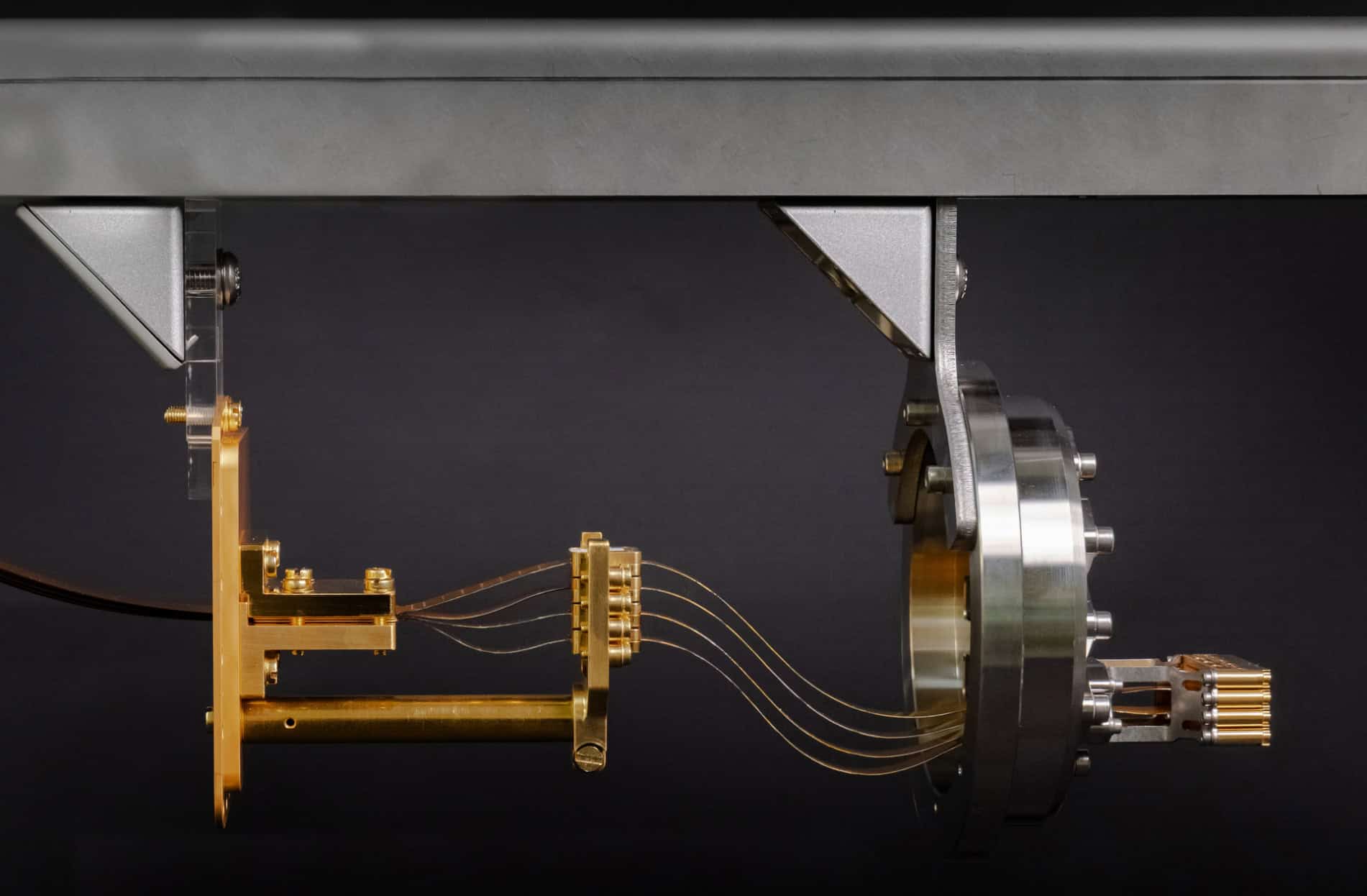Delft Circuits, Bluefors: the engine-room driving joined-up quantum innovation – Physics World

Report on the Dutch-Finnish Industrial Partnership for Quantum Technology Advancement
Executive Summary
A strategic technology partnership has been formed between Bluefors of Finland and Delft Circuits of the Netherlands to deliver integrated, scalable cryogenic I/O cabling solutions for the quantum technology sector. This collaboration directly supports several United Nations Sustainable Development Goals (SDGs), primarily SDG 9 (Industry, Innovation, and Infrastructure) and SDG 17 (Partnerships for the Goals), by creating resilient infrastructure for a nascent industry and fostering international cooperation to accelerate technological progress.
Fostering Innovation and Infrastructure: SDG 9
The partnership addresses a critical bottleneck in the scaling of quantum computers, thereby fostering innovation and building resilient infrastructure for the global quantum industry. The collaboration aims to provide a development pathway for quantum systems to evolve from hundreds of qubits to tens of thousands by 2030.
Technological Solution: Cri/oFlex® Integration
The core of the initiative involves integrating Delft Circuits’ Cri/oFlex® cabling technology into Bluefors’ cryogenic measurement systems. This creates a complete, industrially proven I/O solution with significant benefits for sustainable industrialization.
- Enhanced Reliability: By integrating components like attenuators and filters directly into the flexible cabling, the solution reduces points of failure, contributing to more robust and reliable industrial infrastructure.
- Scalability: The high-density cabling offers up to 50% more channels per port, enabling the massive increase in qubit counts required for future quantum advantage.
- Efficiency: The Cri/oFlex® technology features a compact footprint and low heatload, promoting energy efficiency within complex quantum systems, a key principle of sustainable industrial practices.
- Turnkey System: The offering of a pre-installed and fully tested “one-stop shop” solution streamlines installation and enhances system uptime for research and industrial end-users.
Global Partnerships for Sustainable Development: SDG 17
This Dutch-Finnish partnership exemplifies the spirit of SDG 17 by leveraging the complementary strengths of two industry leaders to achieve shared goals. It establishes a model for international cooperation in the high-technology sector.
- Synergistic Collaboration: Bluefors, a leader in cryogenic systems, provides the market access and integration expertise, while Delft Circuits offers specialized, innovative cabling technology.
- Aligned Innovation Roadmaps: The collaboration extends beyond sales to include technical and commercial functions, ensuring the long-term alignment of product development with the industry’s evolving needs.
- Market Amplification: The partnership provides Delft Circuits with access to Bluefors’ established global customer base, accelerating the adoption of this enabling technology worldwide.
Broader Contributions to Sustainable Development
The advancement of quantum technology, enabled by this partnership, has the potential to contribute to a wider range of SDGs by solving complex computational problems currently beyond the reach of classical computers.
- SDG 8 (Decent Work and Economic Growth): By enabling the growth of the quantum computing industry, this partnership supports the creation of high-value jobs and promotes sustained, inclusive, and sustainable economic growth.
- SDG 4 (Quality Education): The development of advanced quantum systems provides critical tools for scientific research and higher education, fostering a new generation of scientists and engineers.
- Future Impact: Scalable quantum computing is anticipated to accelerate solutions for climate change (SDG 13), clean energy (SDG 7), and advanced materials science, further aligning this technological progress with global sustainability targets.
Analysis of SDGs in the Provided Article
1. Which SDGs are addressed or connected to the issues highlighted in the article?
The article primarily addresses two Sustainable Development Goals through its focus on technological advancement and collaboration in the quantum computing industry.
-
SDG 9: Industry, Innovation and Infrastructure
This goal is central to the article. The text describes a partnership aimed at creating innovative technological solutions (“scalable cryogenic I/O cabling assemblies”) to build the necessary infrastructure for the next generation of quantum computers. The collaboration between Bluefors and Delft Circuits is a direct effort to “upgrade the technological capabilities” of the quantum industry by overcoming significant bottlenecks, such as scaling qubit counts, which fosters innovation and builds resilient infrastructure for a future-oriented industry.
-
SDG 17: Partnerships for the Goals
The entire article is framed around the “Dutch-Finnish industry partnership.” This collaboration between two specialized companies from different countries exemplifies the spirit of SDG 17. It highlights a private-private partnership that mobilizes and shares “knowledge, expertise, technology” (“specialist know-how to integrate innovative technologies”) to achieve a common technological objective. The article emphasizes that “collaboration, joined-up thinking and product innovation” are the answer to industry challenges, directly aligning with the goal of fostering multi-stakeholder partnerships.
2. What specific targets under those SDGs can be identified based on the article’s content?
Based on the article’s focus, the following specific targets can be identified:
-
Target 9.5: Enhance scientific research, upgrade the technological capabilities of industrial sectors
The partnership’s explicit goal is to upgrade the technological capabilities of the quantum computing sector. The article states the collaboration will “overcome the quantum tech industry’s biggest bottleneck” and provide a “fully scalable I/O solution for their quantum systems.” This directly supports the enhancement of research and technological capacity by providing better tools and infrastructure for “developers in research and industry.”
-
Target 17.16: Enhance the global partnership for sustainable development, complemented by multi-stakeholder partnerships
The collaboration between Bluefors (Finland) and Delft Circuits (Netherlands) is a clear example of a “multi-stakeholder partnership that mobilize[s] and share[s] knowledge, expertise, technology.” The article notes that Bluefors brings its “muscle and specialist know-how” in cryogenics, while Delft Circuits provides its innovative Cri/oFlex® cabling technology. This sharing of expertise is designed to “accelerate the journey to quantum advantage.”
-
Target 17.17: Encourage and promote effective public, public-private and civil society partnerships
While this target includes public and civil society partnerships, it also promotes effective private-private partnerships. The article details such a partnership, which is built on the “experience and resourcing strategies” of both companies to create significant commercial and technological upside, demonstrating an effective collaboration model.
3. Are there any indicators mentioned or implied in the article that can be used to measure progress towards the identified targets?
Yes, the article contains several specific, measurable indicators that can track progress towards the identified targets.
-
Indicators for Target 9.5 (Technological Upgrades and Innovation)
- Increased Qubit Capacity: The article provides a clear quantitative indicator for technological advancement by citing the goal to forge a “development pathway from quantum computing systems with hundreds of qubits today to tens of thousands of qubits by 2030.” The product roadmap further specifies a goal of scaling from “150+ qubits today out to 40,000 qubits and beyond in 2029.”
- Improved System Performance and Quality: Qualitative indicators are mentioned, such as guaranteeing “high gate fidelities,” “minimizing noise and heating,” and ensuring “market-leading uptime and reliability.” These metrics measure the quality and effectiveness of the innovation.
- Increased Channel Density: A specific technical indicator is the delivery of “up to 50% more channels per side-loading port,” providing a total of “1536 input or control lines to an XLDsl cryostat.”
-
Indicators for Targets 17.16 and 17.17 (Effective Partnerships)
- Formation of a Formal Partnership: The primary indicator is the “newly inked technology partnership between Bluefors… and Delft Circuits.”
- Integrated Product and Service Delivery: The effectiveness of the partnership is indicated by the creation of a “one-stop shop” and an integrated product offering where the “Cri/oFlex® solution [is] pre-installed and fully tested in Bluefors cryogenic measurement systems.”
- Strategic Alignment of Innovation: A long-term indicator of the partnership’s depth is the commitment to “ensure close alignment of our respective innovation roadmaps,” showing a strategic, not just tactical, collaboration.
4. Summary Table of SDGs, Targets, and Indicators
| SDGs | Targets | Indicators |
|---|---|---|
| SDG 9: Industry, Innovation and Infrastructure | 9.5: Enhance scientific research, upgrade the technological capabilities of industrial sectors. |
|
| SDG 17: Partnerships for the Goals | 17.16: Enhance multi-stakeholder partnerships that mobilize and share knowledge, expertise, and technology.
17.17: Encourage and promote effective private-private partnerships. |
|
Source: physicsworld.com
What is Your Reaction?
 Like
0
Like
0
 Dislike
0
Dislike
0
 Love
0
Love
0
 Funny
0
Funny
0
 Angry
0
Angry
0
 Sad
0
Sad
0
 Wow
0
Wow
0
















































/environment-climate-change-and-health-(ech)/water-sanitation-hygiene-and-health-(wsh)/landfill-tuvalu-36092.tmb-1200v.jpg?sfvrsn=5c21fe40_1#)

.jpg.webp?itok=0ZsAnae9#)


























